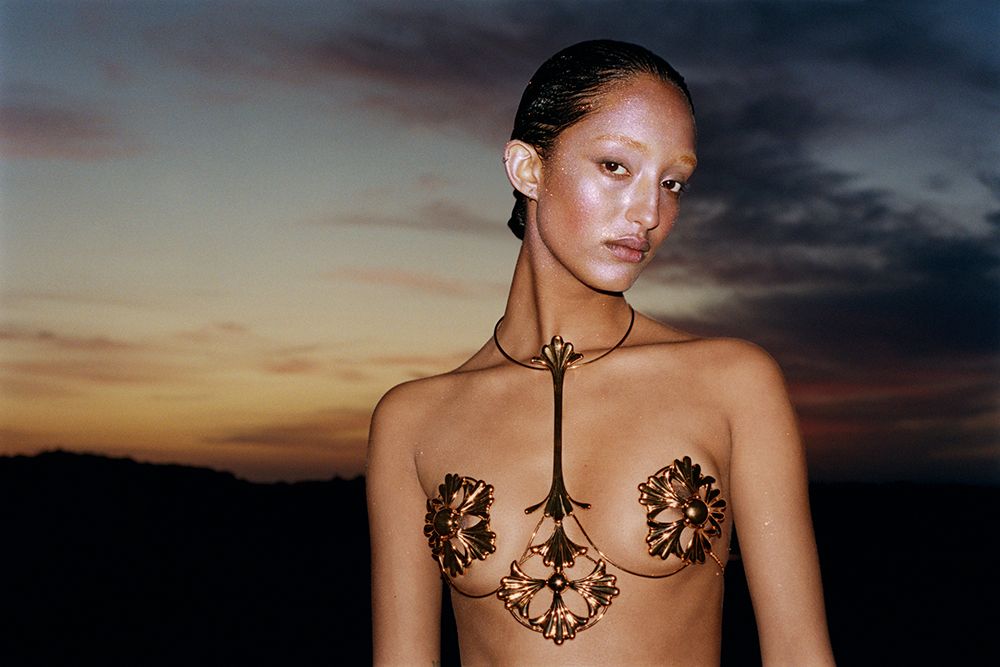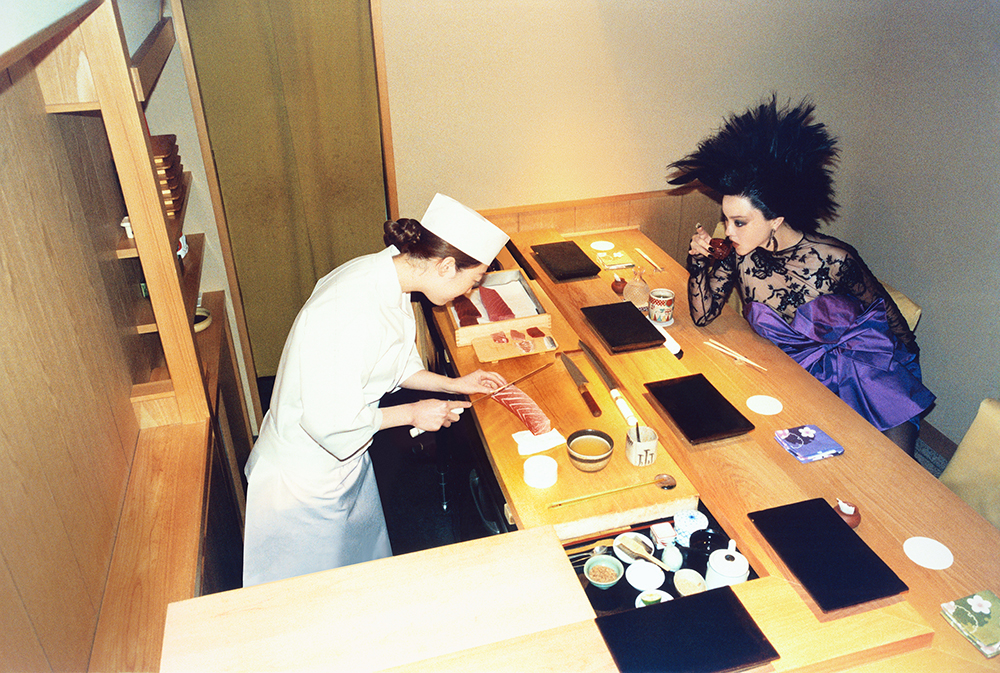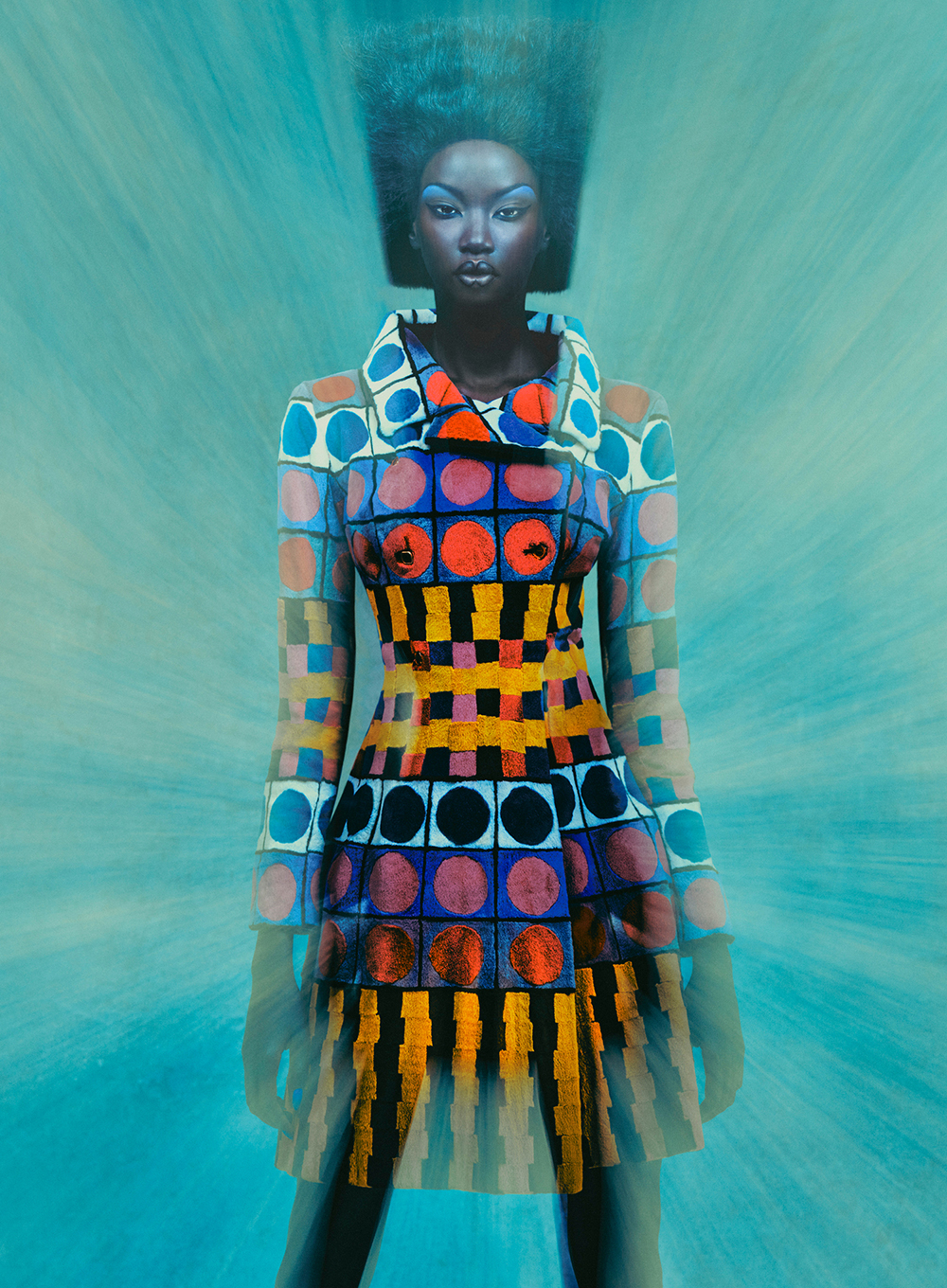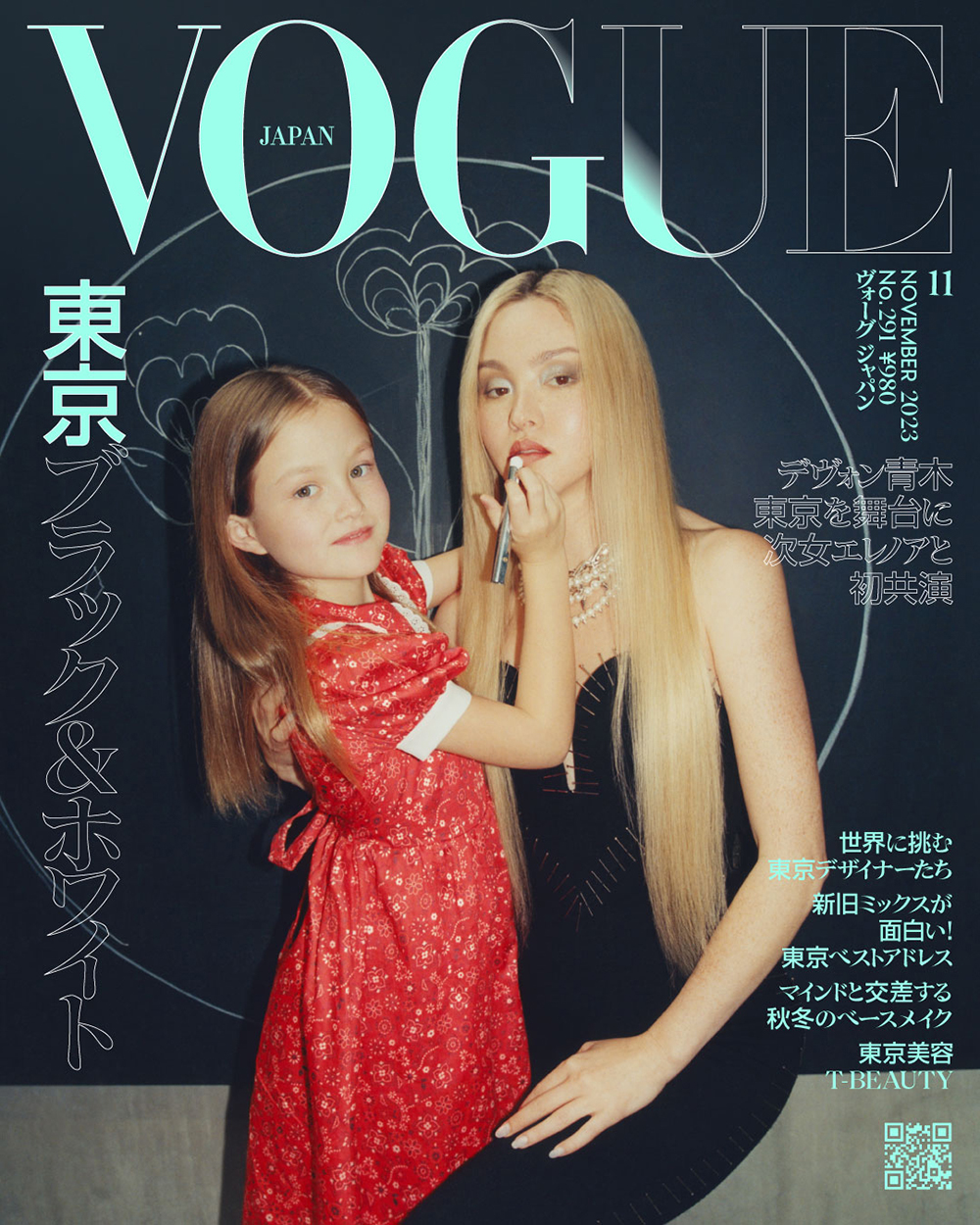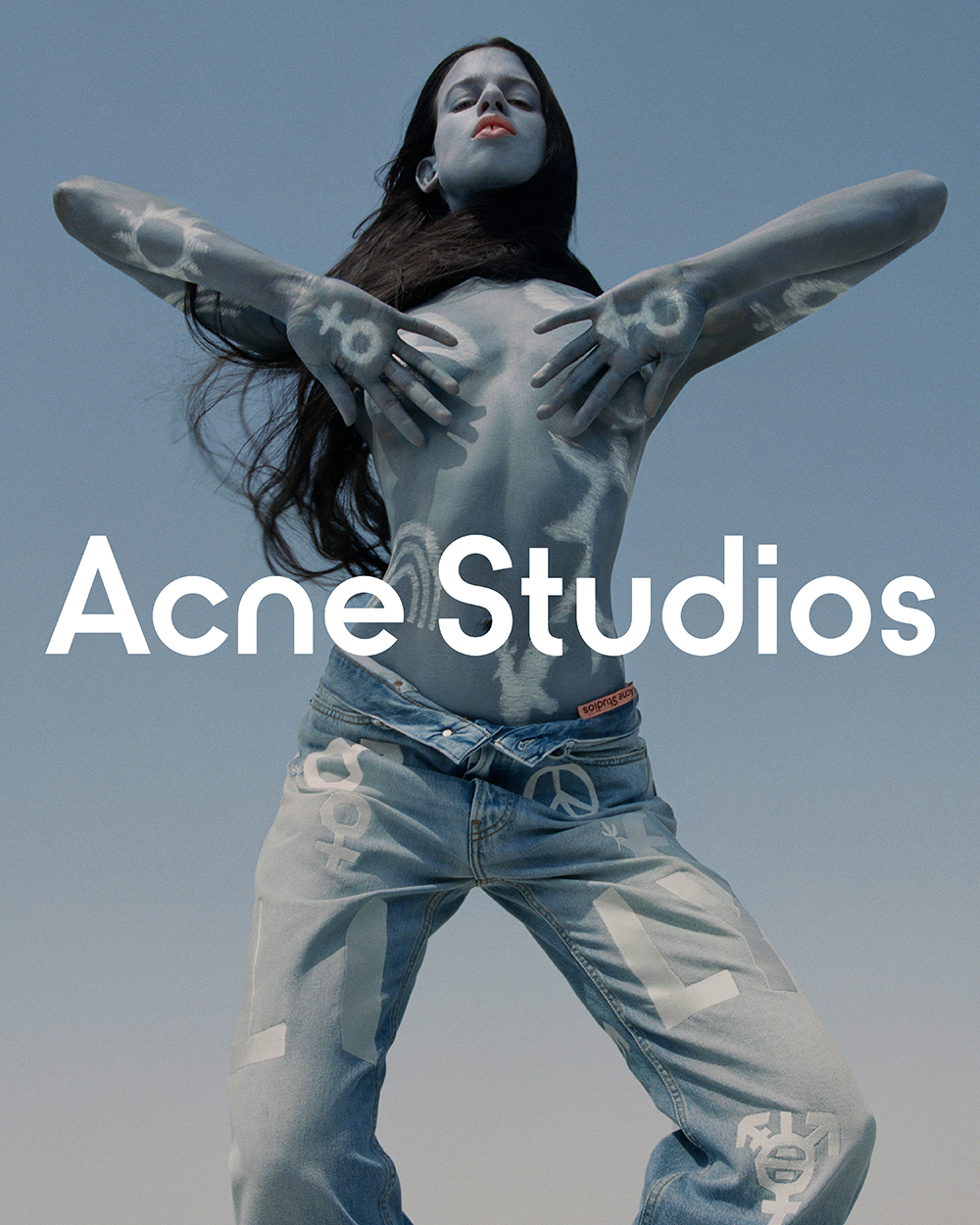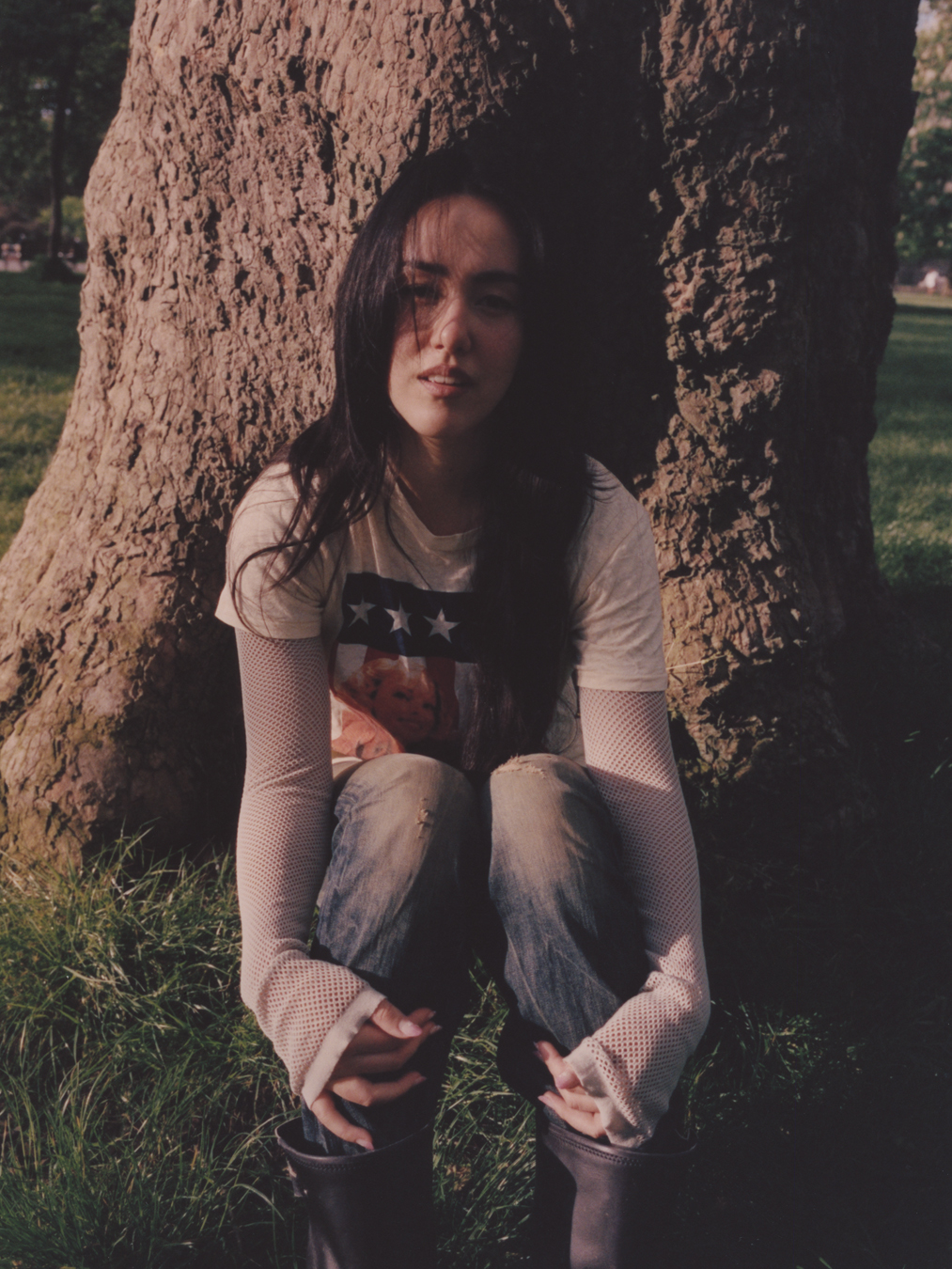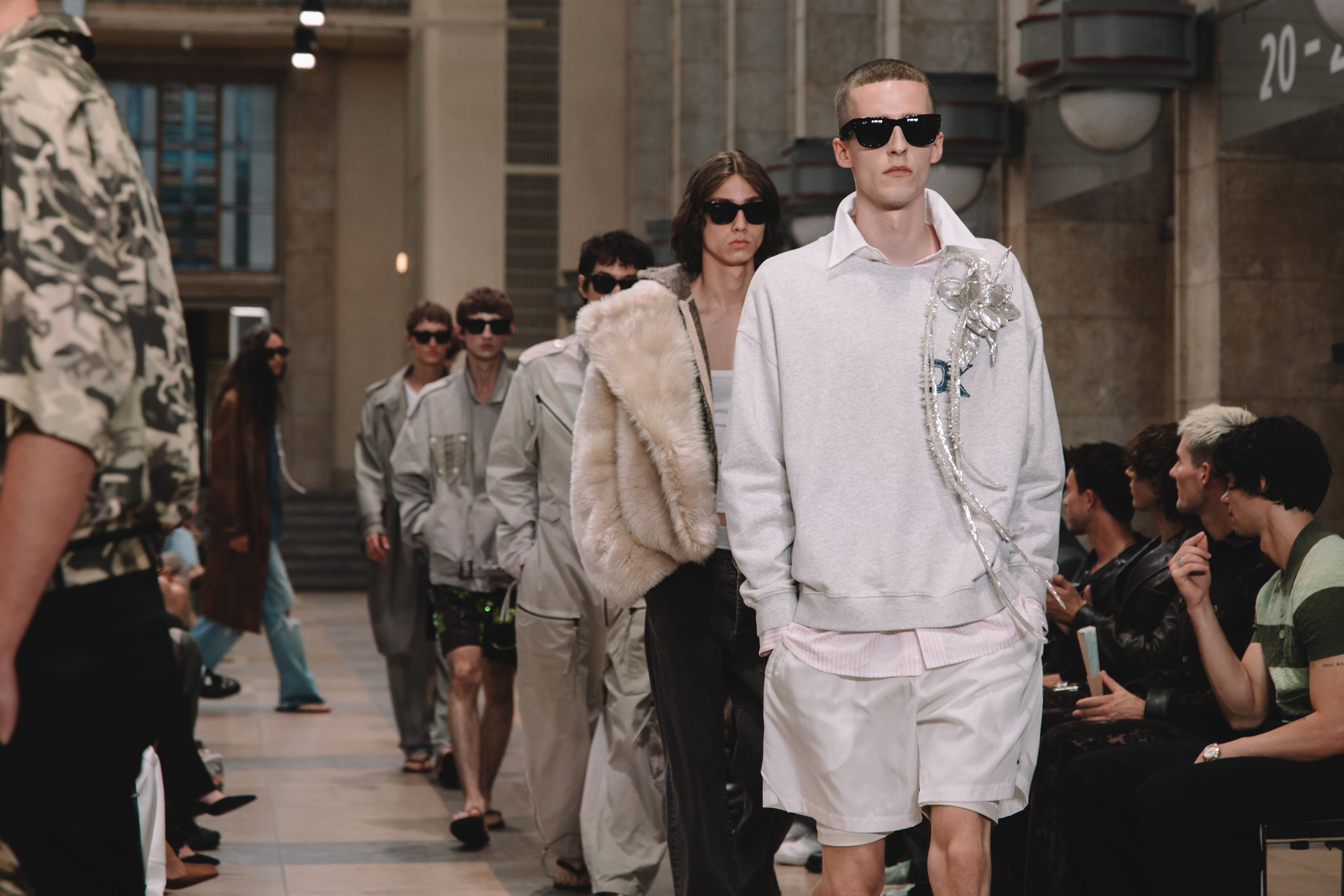Toeing the line between fantasia and anime, London-based makeup artist Ana Takahashi has made a name for herself creating wondrous looks with pops of neon hue. From her humble beginnings experimenting with her mother’s luxury beauty products to becoming one of the most innovative voices in makeup artistry, Takahashi has carved a distinct path in the creative industry working with artists like Charli xcx, Rina Sawayama, and Kylie Minogue. Growing up in London, she turned early frustrations with the lack of makeup catering to her Asian features into a deep exploration of self-taught beauty through blogs and tutorials, which soon became the foundation of her craft. Her journey took off in earnest during her university years when she took a chance to begin freelancing, building her portfolio through collaborations with young designers, photographers, and stylists. Her work on Central Saint Martin graduate shows and features in publications like Vogue and Dazed quickly cemented her as a rising talent, with her bold yet personal approach blending nostalgia and individuality. In the years since, Ana has worked with top creative teams for magazines like Pop, W, and AnOther, earning a reputation for her fearless artistry. Whether she’s transforming muses like Devon Aoki and Emily Ratajkowski or navigating challenges like heat-induced melting body paint on a shoot, Takahashi thrives on pushing boundaries while staying grounded in her creative integrity. Models.com spoke to the makeup artist about her inspirations, celebrating diverse beauty, and using beauty to empower both herself and her collaborators.
What was your initial relationship with beauty growing up? Do you remember your first moments working in this industry?
My mum used to work at Duty Free in the airport so she would always be given free makeup from the beauty counters. They were all luxury beauty brands, so the first products I used were amazing: Shu Uemura, Lancome, and Bobbi Brown. All my mates in school were using Superdrug and Boots brands like Collection, Barry M, and Maybelline, and I remember feeling frustrated at the time because I could never find makeup in the drugstore that worked for my Asian skin tone and stubborn Japanese lashes. But it’s because of that frustration that I really started to do my research on beauty blogs and YouTube tutorials, which is essentially where I got the majority of my makeup education. This obsession quickly turned me into the makeup girl at school, and I remember getting asked many times to do makeup for my friends for parties, which was so fun for me. My very first paid job was during uni; in fact, I’m pretty sure I bunked off class to do it. I got it from a photographer DMing me on Instagram, and it was for a very rich lady who had a fashion brand in west London. We’d shoot in her eccentric mansion; I felt very out of place and gobsmacked that people lived in houses that had movie theatres, haha. I got paid £100 a day and felt like I hit the jackpot. One of the photographers from the brand put me on a Fred Perry shoot, and from then on I was really able to start building my portfolio in a legitimate way.
You followed your instinct and dropped out of university to get more practical experience. How did you first foster those freelance opportunities that aided your transition, and how supportive was the creative scene in London?
Once I started doing those smaller jobs, I made my website and built my portfolio. I constantly promoted my website on my Instagram and made it very clear to my following that I was available for bookings. To my surprise I wasn’t short on work, and had quite a regular flow of jobs pre-Covid. During my time in uni, I naturally made friends with many young designers, photographers, and stylists, so it was kind of a known fact that if anybody needed makeup, they could come to me. I would do many of these jobs for free, and every once in a while there would be a rich student who would pay me, which meant I could pay rent that month, truly a godsend! Any extra money I had, I would invest in doing editorials with friends. I also did a couple of CSM graduate shows, which had great coverage from iconic publications like Vogue, Love, and Dazed. This definitely legitimized me as an up-and-coming makeup artist. It was a great experience and exposed me to industry people I wouldn’t have had access to from social media alone.
Who were your beauty idols growing up, and why?
Lady Gaga is my number 1, without a doubt. I was about 9 when The Fame came out, and it definitely altered my brain chemistry! It’s so funny because, as a kid, you don’t think about how pop artists create their looks and the creative teams behind the imagery. I really thought, wow, this chick is so weird and has the greatest hair and makeup skills I’ve ever seen. As I got older, of course, I started to realize, “Oh, it was Nick Knight that did that iconic shoot with the slime,” “Oh, McQueen made those cool heels from the Bad Romance video; Val and Eugene did her glam for Alejandro.” I’m so lucky to be able to say that I worked with some of these people. I guess, in hindsight, I was majorly attracted to her use of fashion imagery and appreciation for editorial beauty. It really set her apart from the rest at that time. I adore her to this day.
Do you have artists or eras that you come back to again and again for inspiration?
Of course, as mentioned before, Gaga in her “Fame” era. I also love The White Stripes as a band and adore their album covers and promotional shoots. The way they committed to one color palette throughout their existence is very cool to me. For eras, I really like the 60s-70s Japanese photography scene, specifically Yoshihiro Tatsuki and Kishin Shinoyama. For artists, my absolute favorite, and one that I’m always subconsciously referencing, is Aya Takano.
As someone who utilized social media to her advantage, do you think it was a vital tool in your development and essential for creatives looking to cultivate their own brand?
It’s, without a doubt, essential now. I think the only artists who can carry on working without a social media presence are the ones who established themselves before Instagram was around. I just look at it like LinkedIn for the creative industry and a great way for people to see what I’m up to. I do sometimes hate how much I need to rely on it, but I also don’t think my career would have excelled as quickly without it. I hope that now people see my makeup or BTS photos and guess it’s my work without having to check the @. That is my goal with my Instagram.
When you think about beauty, specifically makeup, is the process of morphing someone into an entirely different character through your work something that drives your creativity?
That is one important element, yes. I’ve always been into fantasy and dramatic beauty, so it’s a great creative outlet for me. When I was starting out, I think I was more focused on the character, and taking any opportunity to do the makeup looks that I wanted. Recently, however, I have been enjoying the process of making the model/talent feel beautiful. It’s very rewarding and, in turn, can actually make the experience more creative because I take into consideration the model’s personality or emotions for the look. It’s also for this reason that I work with the same models again and again because they can be so inspiring as individuals, which is far more valuable to me than any moodboard or reference.
What draws you to unexpected elements in your creative expression?
I realized last year that I was so drawn to nostalgia from my teen years. I’m going through a hideous neon phase right now, which definitely stems from my obsession with Rihanna’s 2010 music video for S&M. I always have months where I’m fixated on one thing like color, texture, song, or item of clothing. I try to use it in my looks again and again until I’m satisfied. I can’t really say specifically why I’m drawn to these things, but recently it’s definitely been things that I was interested as a teen.
You’ve worked with some of the top creative teams, but who have been some of your favorite collaborators?
Eugene Souleiman is always a treat to work with. He’s truly one of a kind and always keeps me on my toes. He has so much experience and has been kind enough to guide and help me on difficult jobs. He’s never short of brilliant ideas, which is a real gift in a world where fashion imagery can sometimes feel very over-replicated. Last year, I also had the opportunity to work with Katy England on a few jobs. That was a great experience because she has such good taste and is so calm and collected. It pushed me to analyze everything I was doing before I presented it to her. Getting her seal of approval felt important to me because she’s worked with all the top British fashion icons. I think I need that kind of wise, strong figure to push me to work at my best.
What is your ideal working situation where you feel most creative?
Ideally, I like working with teams that I’m familiar with. It just takes away that layer of awkwardness that can sometimes be there when you don’t know how far you can push things creatively. Especially with models I’m friends with, it’s nice to know that I can ask them, “Do you mind pouring this pint of pink milk on yourself for the last shot?” or “Right, I’m gonna dye your brows orange now.”
What was your favorite makeup moment that you created last year?
I should probably mention an exciting job that I did, but honestly, it was turning myself into Pete Burns for Halloween. His Big Brother hair and makeup are one of my favorite looks of all time. I loved being a chain-smoking Scouser of the night.
Who have been some of your favorite models and muses to collaborate with, and what qualities make them stand out to you?
I love working with Emily Ratajkowski. Obviously, she’s extremely beautiful, but it’s her kindness and sincerity that is truly unmatched. Serena Motola is another favorite and a friend of mine. She has such a sweet and quiet demeanor, so I always love the challenge of transforming her into something totally opposite of that. I also got the chance to work with Devon Aoki, who is my favorite model of all time. She has the kind of beauty that is hypnotic and unbelievable. What made it even better was that she was a total cutie and extremely humble.
How do you continually challenge yourself in your artistry and professional work?
By working with people I respect and maybe am a bit scared of. I actually used to sometimes turn down jobs with photographers or stylists who were big because I was scared I wasn’t good or experienced enough. I now realize those were such wasted opportunities, and all my best lessons have been learned from embarrassing myself on jobs! It’s an invaluable experience.
What has been the craziest impromptu situation you’ve ever had to navigate on a job, and how did you deal with it?
I once did full-blue body paint on Lily McMenamy for an Acne campaign on the hottest day of the year in London. And, of course, we had to shoot her outside in the direct sunlight. We had no idea it would be that hot, and my makeup tests leading up to it did not account for the heat. It reached 40 degrees, and the body paint was melting the second she stepped outside. The only way I was able to deal with it was by putting full trust in my amazing team of assistants. Usually, I’m a bit of a control freak with intricate makeup looks like that, but that day, I had to accept help. Otherwise, I’m sure I would have been in tears. We managed in the end and it was worth it. I love those images.
The fashion landscape is always changing, but what is some evergreen advice you would give to people who are starting out in makeup now?
I think it’s really important not to look to your peers for makeup inspiration. Of course, you can be inspired by their career path, but creative integrity is so important. The makeup industry is so controlled by trends, so anyone who can think outside of the box will naturally flourish. Say yes to every opportunity in the beginning because you literally never know where it could lead you. I did some shocking jobs early in my career, but they led to me meeting people that I still work with to this day. I’d also say make sure this job is making you happy. This industry is cutthroat and has no checks and balances, but for me, the good far outweighs the bad. So I’d say If you’re not enjoying it, it’s probably not for you, and that’s totally fine.
